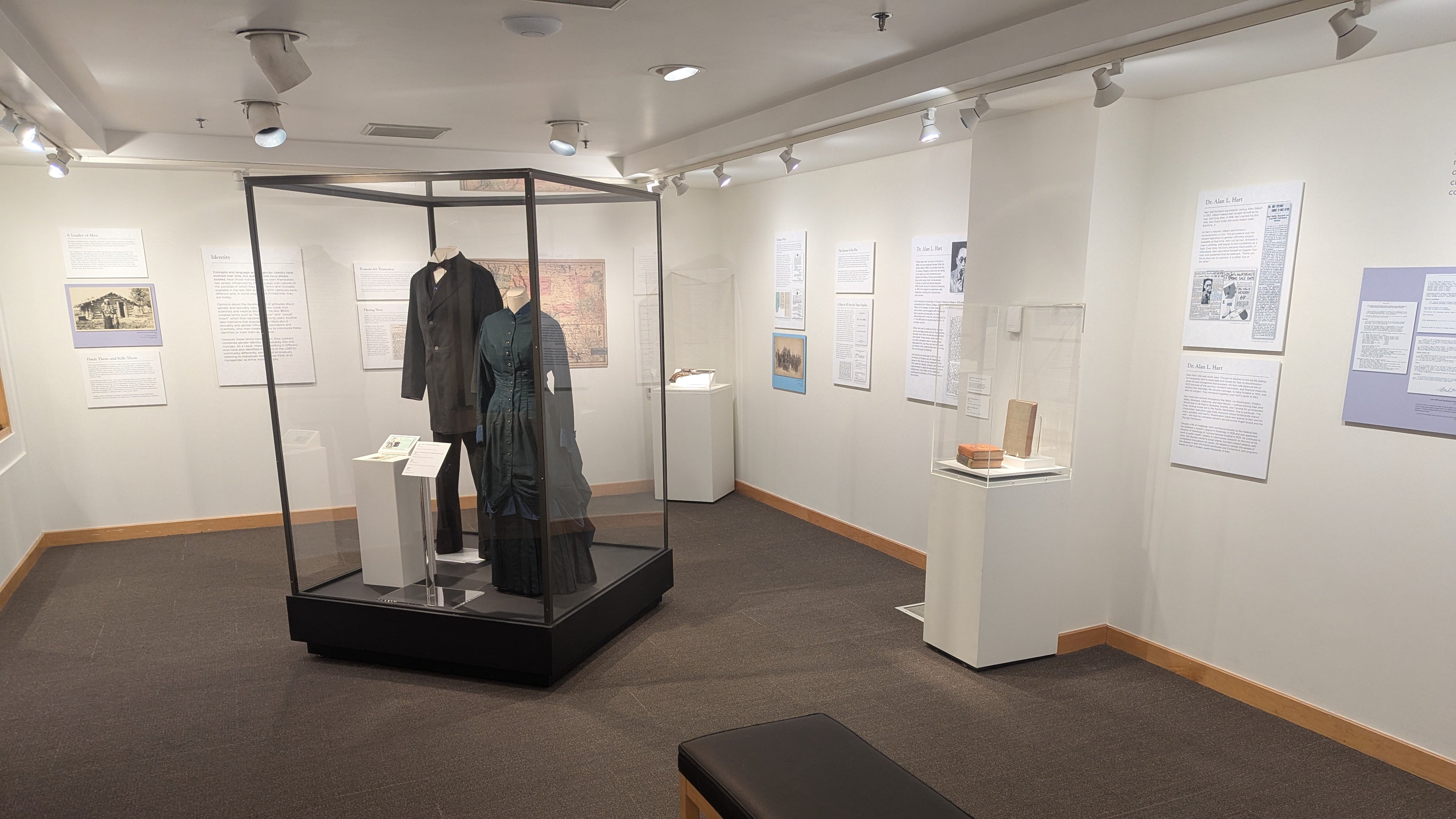A sign outside Oregon Historical Society’s Crossing Boundaries: Portraits of a Transgender West exhibit offers sobering disclaimers about the information and artifacts presented. Aside from a tiny handful of objects like a Billy Tipton record, a sign near the gallery’s entrance notes that most of the exhibit’s artifacts are representative of their eras, and probably not connected to real trans, nonbinary or two-spirit people. Stories and belongings of trans people were often discarded by their families, so it will probably never be clear how many trans people came west in the 1800s. But a sign inside the exhibit, near the end if visitors start clockwise, closes on a more hopeful note that trans histories are still being uncovered today.
Closing Jan. 5, the traveling exhibit Crossing Boundaries and its curator, Dr. Peter Boag, make a dignified effort with limited information to share historical perspectives on people who lived outside binary gender as it was known back then and now. Threads from the past connect to today: the disdain and open cruelty many people feel entitled to show trans people in life and death; the ways dominant media have hurt trans people; and the indomitable strength trans people tap into to be themselves, however openly they share that with others.
Crossing Boundaries notes through informational placards how the historical concept of transitioning birth genders wasn’t always connected to what is now understood as gender dysphoria. Some women posed as men to get jobs and economic opportunities like pensions that they wouldn’t otherwise be afforded. Cathy Williams, for example, was denied her pension around 1889 from fighting as one of the Buffalo Soldiers, even though there was precedence for granting female veterans benefits.
The West offered the freedom to escape more rigid East Coast society and thrive as the person they understood themselves to be with the limited language and resources of the day. Two-spirit Indigenous people like Crow leader Osh-Tish are acknowledged, as were the efforts by missionaries to shame them from the elevated positions they held in tribal societies, but their presence within Crossing Boundaries feels more like a footnote that further obscures their histories.
History buffs will be keenly interested in the stories of Dr. Alan L. Hart, who grew up in Albany and graduated from the University of Oregon in 1913, was appointed Tacoma General Hospital’s director of radiology in 1929 and helped save thousands of lives containing the spread of tuberculosis in Connecticut and the Pacific Northwest while providing compassionate care to patients of a socially stigmatized disease. Degrees issued under his birth name prevented him from obtaining stable employment. Joe Monahan, a locally well-respected cowboy and gold prospector in Idaho, was one of a few trans people whose reputations didn’t suffer after obituaries outed them when he died in 1904.
Mrs. Nash wasn’t so lucky. The wife of an aide to Gen. George Armstrong Custer of the 7th Cavalry, Mrs. Nash was a laundress well-liked by other officers’ wives in life. After being posthumously outed, however, Mrs. Nash’s first name was erased from history, with racist references to her appearance noted in obituaries. Her husband, Cpl. John Noonan, ended his life a month after her death in 1878 due to the social and press harassment he suffered while grieving his wife. Mrs. Nash’s proximity to Custer likely spared her from complete damnatio memoriae, but transphobic contemporaries, reporters and historians tried anyway and still failed to destroy her.
In its last week, Crossing Boundaries is a sobering reminder of how far trans rights have come in a century and a half, and how much further there is to go until transphobes just embrace the spirit of the American West and let people live as they want. The exhibit serves as undeniable proof that the common gender binary isn’t enough for everyone, and while it openly can’t fully illustrate trans people’s roles in late 19th and early 20th century America, there is still more of the story to tell.
SEE IT: Crossing Boundaries: Portraits of a Transgender West at the Oregon Historical Society, 1200 SW Park St., 503-222-1741, ohs.org. 10 am–5 pm Monday–Saturday, noon–5 pm Sunday. $12–$14, free for children 17 and under and Multnomah County residents with valid ID.

